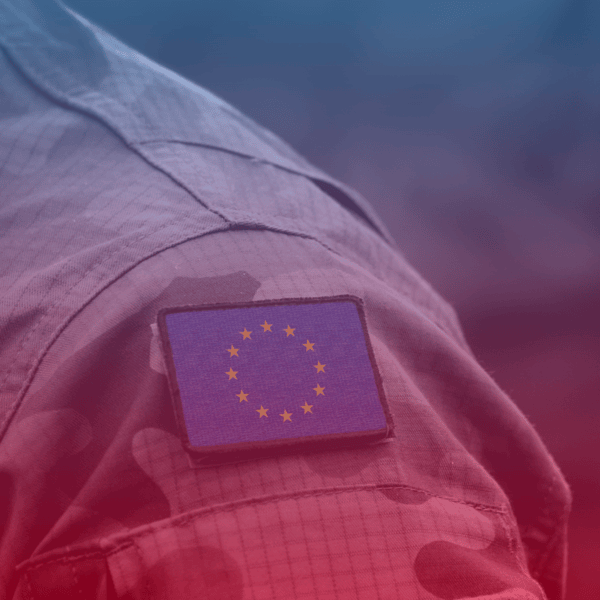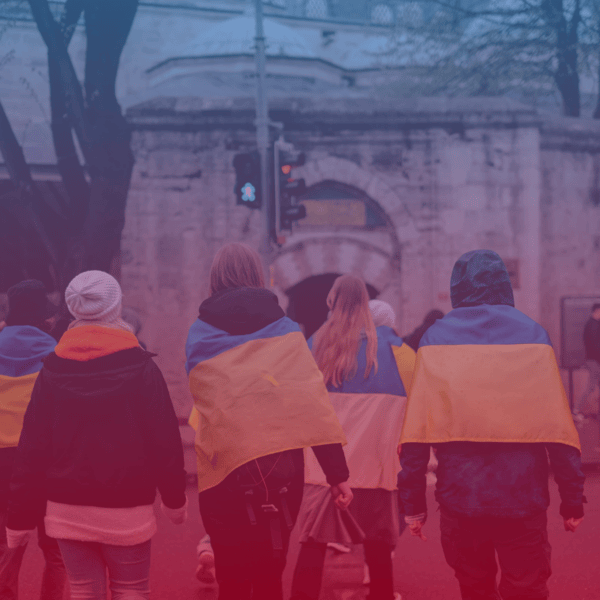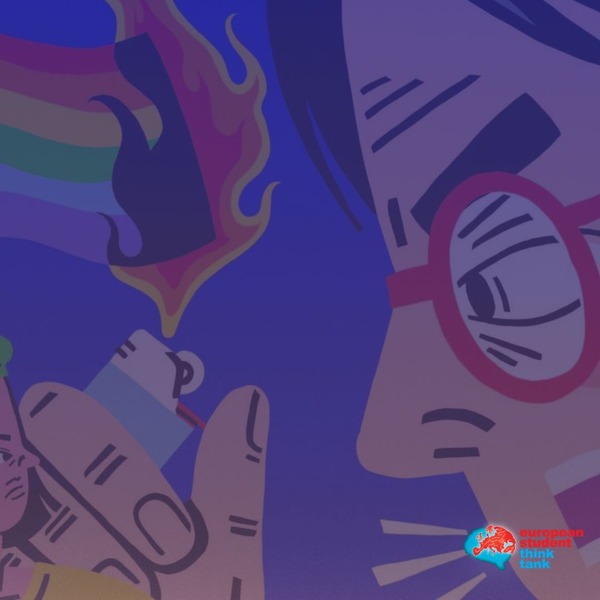
Written by: Vera Rodríguez Corcho
Edited by: Irene Reyes
INTRODUCTION
Nations unite strangers based on a sense of belonging and shared characteristics, excluding those who do not share them. This article discusses how contemporary nationalism can profit from a state’s provision of social rights (e.g., women’s rights, animal welfare, LBTQ+ rights) to leverage their international image. This is done primarily in two ways. The first is through pinkwashing. States promote their image of “progressiveness” to cover up other oppressive practices in the nation or abroad. The second is through homonationalism, where international powers portray themselves as “advanced” in social rights to exclude the “other”, often non-national and/or Muslim. This juxtaposition not only bolsters nationalistic pride but also legitimizes hostile actions against the portrayed “other.” These two mechanisms serve as strategic tools for foreign policy and domestic issues. As a result, politicians or heads of state will employ this narrative to raise consent in a population to perform a specific act. This ranges from passing a harsher migration bill to foreign intervention in another country or illegal occupation.
It is crucial to analyze how the proliferation of homonationalism discourses impacts Human Rights. This article concludes by criticizing this practice and advocating for a conscious foreign policy by states and those who support them.
NATIONALISM AGAINST AN “OTHER”
Nations appeared in the 18th century, utilizing historical elements to build themselves (Anderson, 1983; Murphy, 1999). They are “imagined political communities” that create a sense of common belonging with fellow members who have not established direct contact with each other (Anderson, 1983). Defining a nation is inherently an international process, necessitating certain dichotomies to survive (e.g., national vs foreigner). In this way, nations remain embedded in the global arena, creating a sense of distinctiveness vis-à-vis other nations (Calhoun, 1993, p. 216).
Along with nations, the concept of nationalism appeared. This political construct or ideology unites people around a shared understanding of identity markers based on the nation (cultural, historical, linguistic) (Anderson, 2006; Gellner, 1983). Nationalism distinguishes one group from another and, therefore, excludes the “other”. However, this identification is not always negative and can take many forms. The two broad varieties of nationalism are civic and ethnic (Kohn, 1944). The first defines the nation through shared citizenship, political rights, and allegiance to common political procedures. It emphasizes inclusivity and equal rights for all citizens. In contrast, ethnic nationalism focuses on shared heritage, including a common language, faith, and ancestry.
In this regard, the logic of pitting the in-group against the out-group generates opportunities to exploit this concept against a racial other through narratives (Babbha, 1990). In recent decades, radical right parties have gained traction and brought the nation to the center of political discourse. These political formations use nationalism to promote the dominance of the ethnic group. “Without ethnic nationalism, the radical right would be deprived of its principal arguments.” (Bar-on, 2018, p. 18).
Furthermore, while radical right parties often rely on ethnic nationalism, understanding the subject as a binary phenomenon overlooks the many overlaps between the two forms (Brubaker, 2004). Indeed, nationalism might profit from the shared values attained in a country while maintaining a strong ethnic idea. These values are not fixed entities; they change over time. What was previously perceived as a threat or external to the traditional national community –e.g., veganism (Alloun, 2020), gay rights (Puar, 2013)- is now included in the nation. As these sectors become culturally normalized and socially accepted, new boundaries of belonging and exclusion are established (Mole, 2017, cited in Dhoest, 2020; Richardson, 2017). LGBTQ+ rights are increasingly being used to define the nation. Thus, they are also being used to cover up oppression and exclusion.
PINKWASHING OR HOMONATIONALISM?
The changing definition of who belongs in a nation reshapes the barrier between citizens and “others.” Contemporary Western states use perceived progressive values to cover up oppressive practices or justify foreign intervention in third states. This section explores these practices through two concepts: pinkwashing and homonationalism.
“Pinkwashing” is a term coined by Schulman (2011) to describe the strategy of promoting a facade of LGBTQI inclusivity to distract from human rights violations. It serves as a tool for state actors to divert attention away from inequality, oppression, and discrimination by positioning themselves as promoters of gay rights. For instance , the fact that same-sex marriage is legal in a country does not negate other human rights infringements. Companies, political parties, and states use legal achievements like same-sex marriage to cultivate a more “progressive” outward image. A prime example of this practice would be a fast-fashion company celebrating Pride while exploiting their LGBTQ+ workers in the Global South.
In some countries, LGBTQ+ rights have recently been integrated into democratic political regimes as part of social rights after decades of activism. These include the right to marry and serve in the military. However, these achievements have come with an identity component related to the nation-state in which they are integrated. Because gay rights have historically developed within democratic Western (white) democracies, a link has been established between LGBTQ+ rights and white individuals from wealthy nations.
This identity (ethnic) component is the distinguishing factor between pinkwashing and homonationalism. While the former aims to distract from unethical practices and human rights violations, homonationalism promotes LGBTQ+ rights against a (often racial) other. Under homonationalism, states use perceived progress values to reinforce nationalist, imperialist, and exclusionary policies (Puar, 2007).
This association of white identity with liberal values has given global actors the power to leverage the image of progress of a country in opposition to the population of another, usually racialized. This is evident in political party narratives (Ben‐Shitrit et al., 2022) as well as state policies (Puar, 2007). Puar (2007) was the first to coin the term regarding U.S. politics during the “War on Terror.” However, in recent years, the study of the term has increased in scope, including other states. Today, homonationalism is also defined as a tool to justify foreign intervention, thus reinforcing colonialism and imperialism (Carson, 2013).
In summary, pinkwashing is the use of liberal values as a smokescreen for exclusionary and oppressive policies. This idea is exacerbated in homonationalism, which describes a state’s use of gay rights to enhance its nationalism, creating a narrative of (western and white) sexual exceptionalism. This tactic often integrates islamophobia into the discourse of queer liberation, reinforcing racial and cultural hierarchies.
HOMONATIONALISM: GAY RIGHTS AS A GLOBAL WEAPON
Homonationalism in current politics operates across many spatial dimensions, though the literature on the subject could be grouped into two main categories. The first is political parties’ use of homonationalism. Radical right-wing formations use homonationalist rhetoric to incite fear about migrants from North Africa or the Middle East by positioning them as a cultural threat to LGBTQ+ rights (Van Der Veer, 2006). The second is the use of homonationalism by states during a conflict to reduce the adversary’s legitimacy (Carson, 2013; Puar, 2007; Puar, 2013).
It must be stressed that many politicians in Western Europe use homonationalism. The most prominent examples in this discourse’s literature come mainly from the Netherlands (Van Der Veer, 2006; Wekker, 2009). For instance, Dutch politician Pim Fortuyn was particularly vocal in his defense of individual and sexual freedoms, using his public gay identity to position himself as a defender of Dutch progressive sexual politics against Islamic traditions (Van Der Veer, 2006, p. 115). In general, homonationalism advocates for national values against a threat of another state’s culture that could endanger these values. These discourses often employ rescue narratives that extend from saving women (particularly Muslim women) to saving gays (Bracke, 2012). This does not only encompass white gays, but also gay Muslims, seen as victims to be saved.
This electoral dimension of homonationalism instrumentalizes gay rights. It fosters an apparent inclusion towards LGBTQ+ citizens, conditional on how they serve nationalists to socially disidentify from those belonging to the out-group (Turnbull-Dugarte & López Ortega, 2024). In short, the inclusivity that the parties promote with homonationalism is only superficial and instrumental both by the people who engage in this discourse (nationalists) and the parties themselves.
The second use of homonationalism happens in the international sphere. Values such as acceptance and tolerance have become a contemporary barometer by which nations are judged, becoming desirable characteristics for contemporary nations (Puar, 2013). This includes discourses that use sexually progressive multiculturalism to justify foreign intervention in other countries. In fact, this geopolitical use of homonationalism is where the term originated. Starting during the “War on Terror”, the United States presented itself as a progressive power in contrast to an “homophobic” Muslim other (Dhoest, 2020). In this context, terrorists were framed as strangers to the nation, possessing characteristics opposed to it. Puar’s argumentation about homonationalism would be then a contemporary reincarnation of Orientalism, “whereby the undeveloped (Oriental) other is now defined as sexually backward and homophobic” (Dhoest, 2020, p. 157). This definition situates the phenomenon in a broader context of Islamophobia in the West post-9/1. It relies on Orientalist tendencies of “othering” and homogenization, reinforcing the notion that Muslim societies are inherently oppressive toward LGBTQ+ identities.
In a broader sense, homonationalism is also present in Europe and conflicts. Other research points have identified a persistent narrative dichotomy between Western and Eastern Europe, wherein Central and Eastern European countries are portrayed as homophobic and backward, positioned as needing to “catch up” to the West (Kahlina, 2015). This binary opposition extends beyond regional politics into broader international conflicts, where narrative construction becomes a primary battleground for legitimacy (Said, 2003). This is particularly significant in disputes involving nation-building and land occupation (Alloun, 2020).
One prominent example of this geopolitical use of homonationalism is that of Israel: understood as a “gay haven” in an “illiberal Middle East”, Israel weaponizes LGBTQ+ rights against Palestinians, portraying them as either victims or oppressive Muslims. This false duality oversimplifies queer Palestinians’ realities by dividing “the world into binaries of civilized versus uncivilized, pride versus homophobia, democracy versus terror”(Alqaisiya, 2018, p. 32).
HOW DOES THIS IMPACT HUMAN RIGHTS?
Homonationalism is an effective yet dangerous tactic because it disguises itself as a concern for minority rights. However, its alleged protection of LGBTQ+ individuals is purely instrumental. The discourse impacts human rights severely.
Firstly, it assumes that immigrants, particularly Muslims, are incompatible with democratic values. This assumption is used to further alienate a population based on ethnicity and/or country of origin. When this discourse is used in an international conflict, it might create the illusion that another population is undeserving of aid or compassion due to their state’s handling of certain social rights.
Secondly, it undermines LGBTQ+ rights themselves. Many of the Queens who rioted at the Stonewall Riot do not conform to today’s rigid categorization of identity . Nevertheless, they are remembered as ‘the radical gays who took to the street’ (Carson, 2013, p. 3). Overtime, the mainstream has absorbed the movement and converted it into a liberal story, where their “queerness is appropriated and politicized not only for particular ends but by particular bodies” (Carson, 2013, p. 2). This understanding of queerness is also the one in which homonationalism operates. There is an “accepted queerness,” that only encompasses white lesbians and gays. That is, homosexuals and lesbians are usually protected under homonationalism, yet transgender or gender non-conforming citizens are not included in this hovering narrative (Schotten, 2016). Homonationalism only safeguards those queer individuals that the mainstream state accepts, leaving out racialized queer citizens and non-citizens. Therefore, rather than genuinely supporting LGBTQ+ rights, homonationalism serves to reinforce exclusionary and racialized hierarchies between states and within, countries and queer communities themselves.
CONCLUSION
This article has examined the two main uses of gay rights as a weapon: pinkwashing and homonationalism. Special attention has been given to homonationalism, identifying domestic and international trends. These discourses thrive on prejudice and do not advance queer rights. Instead, they instrumentalize them to deepen nationalist policies that rely on ethnicity. The result is exclusion.
These tactics rely on the logic that Western democracies are exempt from committing wrongful foreign policy acts because of their “progressiveness.” Prejudices such as this form the basis for homonationalism discourses to thrive. That is why foreign policy must be read through a conscious lens of prejudices, not only related to sexuality but also to its intersection with race.
BIBLIOGRAPHY
Alqaisiya, W. (2018). Decolonial Queering: The Politics of Being Queer in Palestine. Journal of Palestine Studies, 47(3), 29–44. https://doi.org/10.1525/jps.2018.47.3.29
Anderson, B. R. O. (2006). Imagined communities: Reflections on the origin and spread of nationalism. Verso.
Baron, S. W. (1944). [Review of The Idea of Nationalism. A Study in Its Origins and Background, by H. Kohn]. Jewish Social Studies, 6(4), 408–411. http://www.jstor.org/stable/4464622
Bar-on, T. (2018). The Radical Right and Nationalism. In The Oxford Handbook of the Radical Right (Jens Rydgren). https://doi.org/10.1093/oxfordhb/9780190274559.013.2
Ben‐Shitrit, L., Elad‐Strenger, J., & Hirsch‐Hoefler, S. (2022). ‘Pinkwashing’ the radical‐right: Gender and the mainstreaming of radical‐right policies and actions. European Journal of Political Research, 61(1), 86–110. https://doi.org/10.1111/1475-6765.12442
Bracke, S. (2012). From ‘saving women’ to ‘saving gays’: Rescue narratives and their dis/continuities. European Journal of Women’s Studies, 19(2), 237–252. https://doi.org/10.1177/1350506811435032
Calhoun, C. (1993). Nationalism and Ethnicity. Annual Review of Sociology, 19(1), 211–239. https://doi.org/10.1146/annurev.so.19.080193.001235
Carson, T. (2013). ‘He’s Got a Rainbow Gun’: Homonationalism and the Israel-Palestine Conflict. Interstitial Journal, 1.
Dhoest, A. (n.d.). Homonationalism and Media. 2020. https://doi.org/10.1093/acrefore/9780190228613.013.1163
Dissemination Time, narrative, and the margins of the modem nation. (2013). In Nation and narration (1. publ., repr). Routledge.
Gellner, E. (1983). Nations and nationalism. Cornell University Press.
Kahlina, K. (2015). Local histories, European LGBT designs: Sexual citizenship, nationalism, and “Europeanisation” in post-Yugoslav Croatia and Serbia. Women’s Studies International Forum, 49, 73–83. https://doi.org/10.1016/j.wsif.2014.07.006
Puar, J. (2013). Rethinking Homonationalism. International Journal of Middle East Studies, 45(2), 336–339. https://doi.org/10.1017/S002074381300007X
Puar, J. K. (2007). Terrorist Assemblages: Homonationalism in Queer Times. Duke University Press. https://doi.org/10.1215/9780822390442
Richardson, D. (2017). Rethinking Sexual Citizenship. Sociology, 51(2), 208–224. https://doi.org/10.1177/0038038515609024
Said, E. W. (2003). Orientalism (Facsimile edition). Penguin.
Schotten, C. H. (2016). Homonationalism: FROM CRITIQUE TO DIAGNOSIS, OR, WE ARE ALL HOMONATIONAL NOW. International Feminist Journal of Politics, 18(3), 351–370. https://doi.org/10.1080/14616742.2015.1103061
Turnbull-Dugarte, S. J., & López Ortega, A. (2024). Instrumentally Inclusive: The Political Psychology of Homonationalism. American Political Science Review, 118(3), 1360–1378. https://doi.org/10.1017/S0003055423000849
Van Der Veer, P. (2006). Pim Fortuyn, Theo van Gogh, and the Politics of Tolerance in the Netherlands. Public Culture, 18(1), 111–124. https://doi.org/10.1215/08992363-18-1-111

 THE DIGITAL EURO: Unlocking its potential
THE DIGITAL EURO: Unlocking its potential 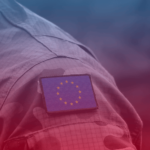 SAFE but Not Secure: The Challenge of a Common Defence and EU’s Unity
SAFE but Not Secure: The Challenge of a Common Defence and EU’s Unity  Blind Spots in AI Governance: Military AI and the EU’s Regulatory Oversight Gap
Blind Spots in AI Governance: Military AI and the EU’s Regulatory Oversight Gap 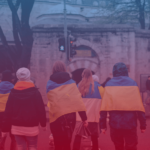 Selective Solidarity: The Desecuritisation of Migration in the EU’s Response to the Ukrainian Refugee Crisis
Selective Solidarity: The Desecuritisation of Migration in the EU’s Response to the Ukrainian Refugee Crisis 
